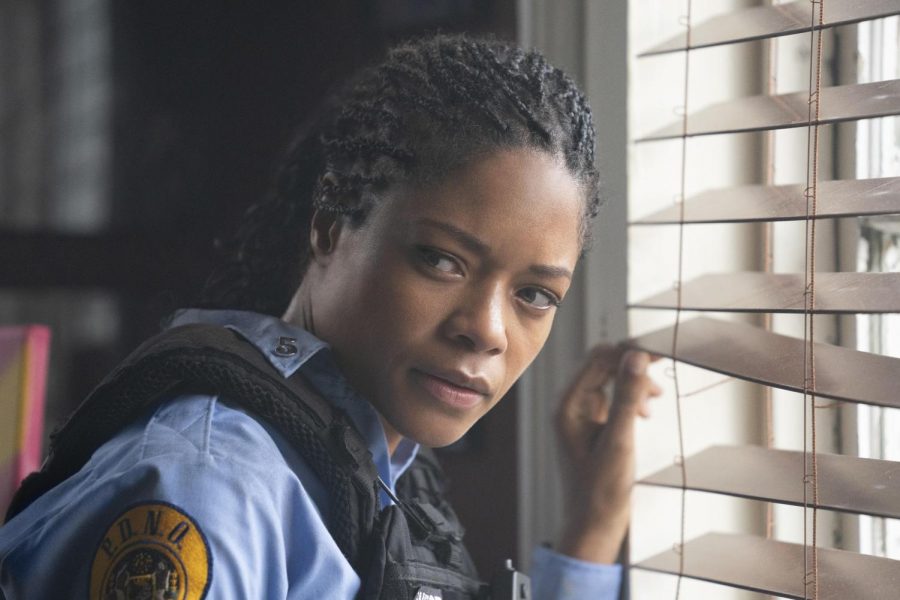Police brutality toward people of color has an abhorrent history throughout American society. Despite making up approximately 13% of the U.S. population, African Americans are disproportionately killed by police. This fact reflects a profoundly problematic issue within the task force that is sworn to protect. This urgent issue has made its way into recent films like “The Hate U Give” and “If Beale Street Could Talk.” Director Deon Taylor’s “Black and Blue” is the most recent effort to highlight some of these injustices, updated for the age of body cams and public accountability.
The good cop/bad cop story begins with an altercation where African American protagonist Alicia West (Naomie Harris) is harassed by two white police officers while out for a morning jog. The hard-to-watch portrayal has become a regular sighting thanks to similar – or worse – footage shared across social media sites like Facebook. Soon realizing that West is “blue,” or one of their own, the officers release her with a stern reminder of their willingness to abuse power. This scene foreshadows a much larger narrative meant to remind audiences how diligent they must be to demand action when those in positions of power threaten the well-being of others.
Back from two tours in Afghanistan, West returns to a city that has long forgotten her. Now addressed as “rookie,” West adjusts to life on the other side. Her new position in a culture divided by the badge ostracizes her from her own community. The only family she can now claim are those who wear a bullet-proof vest. Things only get worse as West’s body cam captures a fellow officer-involved execution which becomes the sole evidence needed to expose a corrupt precinct. Returning this footage to the station becomes a life or death situation. Now on the run from her own partner and a gang of manipulated criminals, the later majority of the film is designated to a wounded West trying to escape a neighborhood that has grown to hate the police.
With a decorated resume of films ranging from “28 Days Later” to “Moonlight,” Harris carries this film tremendously. Her adaptability in roles is truly remarkable. This performance is much needed in a film that doesn’t quite know how hard it wants to hit the issues it began with. Instead of focusing in on issues around race and the disastrous state many precincts find themselves in, it jumps more in the realm of a traditional thriller. In the end, audiences are treated to an emotional roller coaster as relationships are tested and West fights her way through a series of obstacles set to further build on her commitment of doing the right thing.
As a whole, the film delivers ample action to hold the viewer’s attention as these timely messages are softly delivered. Although highly predictable and often times confusing (the rain filter used with no sign of water was distracting as well as a set-up scene with the church seemingly deleted toward the ending), the range of characters and fight scenes make for a suspenseful experience. Those small elements aside, the messages of “be the change” and “open your eyes” will hopefully encourage the audience to continue the much-needed dialogue well after the credits roll. Others may simply leave happy with experiencing another action flick.
“Black and Blue” is now in theaters.




